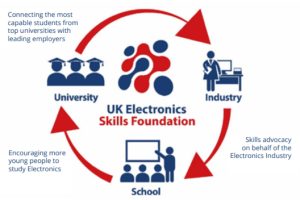 Navigating a route towards a satisfying job typically starts with an interest in an area and building from there. Mary-Anne Legaspi says her passion for software development was nurtured while still a student. She recognised the potential for software growth within the tech industry early on. Her interest was piqued as a student when a subject required her to write code. “It was Turbo Pascal back in those days, and [it was] at a time when the tech industry was growing at a rate where I foresaw a number of opportunities.”
Navigating a route towards a satisfying job typically starts with an interest in an area and building from there. Mary-Anne Legaspi says her passion for software development was nurtured while still a student. She recognised the potential for software growth within the tech industry early on. Her interest was piqued as a student when a subject required her to write code. “It was Turbo Pascal back in those days, and [it was] at a time when the tech industry was growing at a rate where I foresaw a number of opportunities.”
Practical experience
She attended a number of Microsoft events whenever she could and says that the more exposure she had to professionals in the industry, the more inspired she became to continue to see the technology industry evolve.
“I’ve always enjoyed being involved in a little bit of everything, from engaging with end-users via requirements gathering or training, building applications, up to leading small projects,” she says of her eclectic career.
She started as a trainee developer in a small IT agency, armed with a few things she had learned in school, and “finding any learning opportunity possible to broaden my knowledge and experience”.
After graduating from AMA University in the Philippines, Legapsi worked in the system development team at Oxygen Ventures Australia (an advisory for tech startup
s based in Melbourne), and then worked as a senior developer at Bayview Technologies, an IT outsourcing company in the Philippines.
Encouraging STEM
While Legaspi naturally gravitated towards programming, she acknowledges that it is not for everyone and that there is still work to be done to encourage more students to study STEM subjects.
“The technology field, in particular, can be seen as a maths-heavy type of work, and not a lot of people are maths fans,” she concedes.
“By educating not only girls, but everyone, about what kind of roles are out there, for example business analyst, user experience designers, project managers, roles within IT and hardware, I’m sure we can get a lot more people to realise that there are roles for them where their interests and skill sets can fit.”
She thinks organisations should have more internships available to expose students to the varied roles on offer and allow them to explore and find suitable career paths.
Her career advice is to ask questions, speak to family or friends who are in the field and explore the industry by attending as many events as possible.
She also suggests listening to podcasts or applying for internships “and just see if this career is something you might want to pursue”.
The intern route
If a degree does not have a placement component, consider an internship, writes Caroline Hayes.
While many degree courses include a placement or year in industry element, for those that do not include one, an internship is an effective way to acquire work experience and get a better understanding of what does and does not appeal within a sector.
Internships are shorter terms, usually taking place in the summer months and usually taken by undergraduates in the penultimate year of their degree.
The intern position is full time and interns should expect to work on crucial projects rather than be the office junior. In the IT sector they can expect to be performing software updates, application development, troubleshooting tech issues, resolving system bugs and providing general support to other team members.
According to the Student Ladder website, two-thirds of the top 100 employers in the UK offer summer internships and around 60% offer industrial placements, lasting from six to 12 months.
The site lists the top 100 internships, placing cosmetics giant L’Oréal at number one for retail internships, but it also includes Intel, Microsoft, Eaton, BAE Systems, Siemens, Rolls-Royce, BMW Group and GE Aviation.
The site recommends internships as the main basis for many employers’ graduate intake, particularly in engineering companies.
The site Ratemyplacement is dedicated to connecting companies offering an internship with those looking for a ‘taster’ in their chosen industry. The site advises applying between September and March for an internship. The duration of an internship can be as short as four weeks or as long as 16 weeks.
There are also insight schemes, which are less than one month, usually in the Easter holidays, and typically for undergraduates in the last year of their course. In these schemes interns will shadow experienced colleagues and work on short projects, presentations and workshops.
 Electronics Weekly Electronics Design & Components Tech News
Electronics Weekly Electronics Design & Components Tech News



